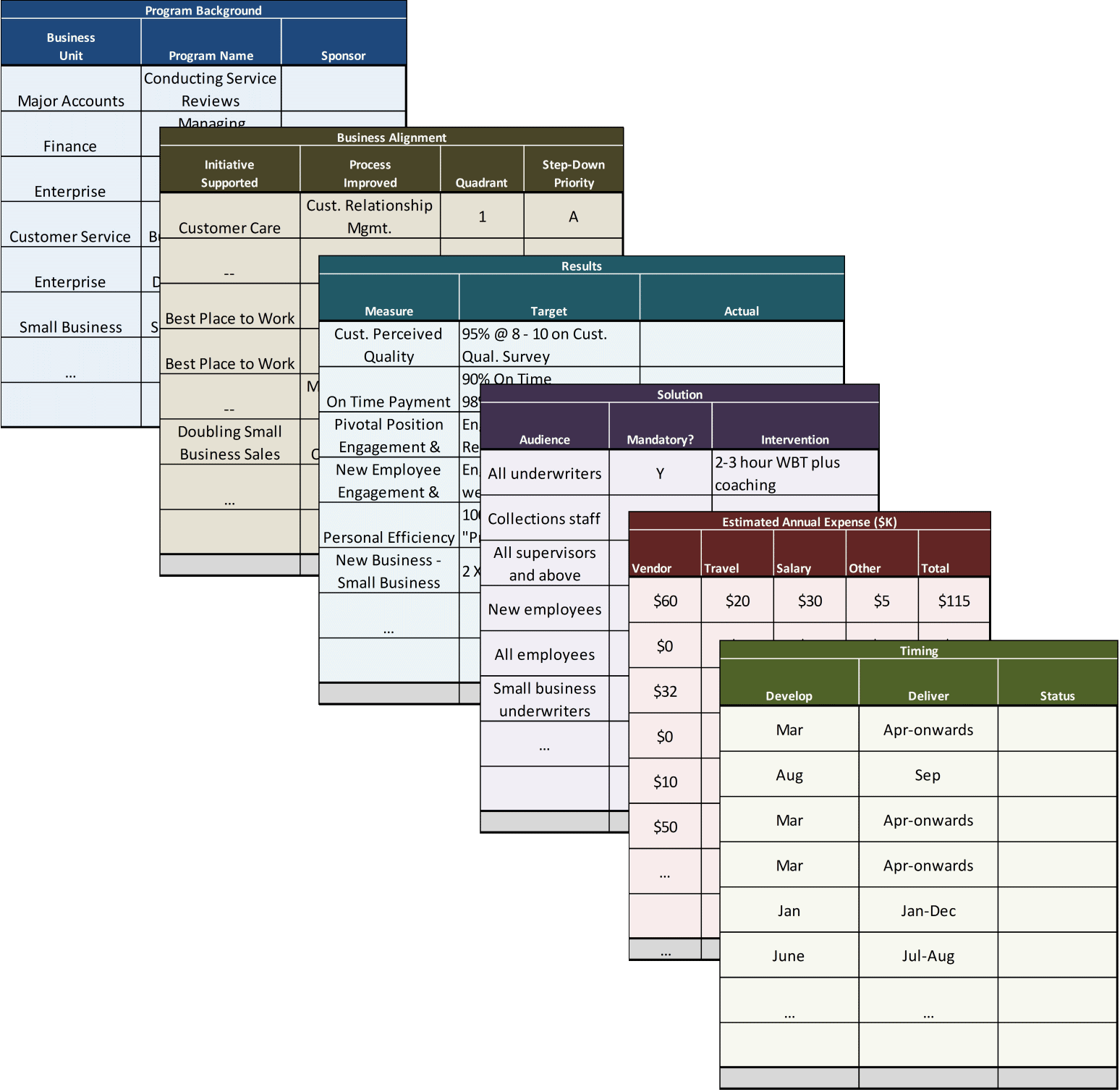Learning Investment Portfolio (& Value Added Matrix)
A2B asks L&D organizations to view their role as enabling the business to define and manage a portfolio of investments in learning that improve its ability to execute. The Learning Investment Portfolio is a docket which summarizes the investments to be designed, developed, purchased, and/or delivered during the upcoming year.
Typically, Business Engagement Managers maintain a Learning Investment Portfolio for each business group they serve. L&D as a whole consolidates these to provide the portfolio for the entire company.
The Learning Investment Portfolio captures one line of detail for each investment. It provides line-item detail that business leaders require to decide which investments to make and how to monitor progress as the year proceeds. Most L&D organizations maintain budget summaries that itemize costs for each of the programs they support. What sets the Learning Investment Portfolio apart is that it also states specific business process targets for each investment. This simple addition shifts the focus from training activity (“did we do the work within budget?”) to investment results (“did we achieve the result?”).

The Learning Investment Portfolio identifies for each investment:
- Background: Which business group will be served? Who is the sponsor?
- Business Alignment: Is a strategic initiative being supported? If so, what is it? Which business process will be improved? Which quadrant of the Value-Added-Matrix best describes the investment? Is it a Driver, Accelerator, Enabler, or a Fundamental?
- Results Targeted: Given the business process identified, which output measure will be improved? Which metric and target will be used to evaluate results, and when will that be done? Later during the year as solutions are executed, which results are actually achieved?
- Solution Highlights: Which audience will be targeted? Will the solution be mandatory for the audience to complete? What will be the size and nature of the interventions employed?
- Cost: What is the estimated cost to implement? In many cases, it’s helpful to subdivide cost into major categories that will be used in budgeting (e.g., the cost of salary and travel for L&D staff, the cost of external partners, the opportunity costs incurred by participating in the program, and so on).
- Timing: When will the solution be available? When will it be delivered?
Note: The Learning Investment Portfolio also includes the Value Added Matrix. The Learning Investment Portfolio enables business leaders to treat each line item as an individual investment. Portfolios typically contain dozens or even hundreds of line items. Business leaders can find it difficult to make wise trade-off decisions without some way to step back from the detail to make broader decisions about how they are placing their learning investment bets. To help business leaders evaluate the portfolio as a whole in addition to a series of individual investments, A2B provides a portfolio analysis, the Value Added Matrix. This builds on top of the Learning Investment Portfolio to make explicit key decisions about how a company allocates its investment; these decisions often remain hidden when companies take only a line-item perspective.
The Value Added Matrix highlights two key investment decisions: How much am I investing in advancing the strategy versus running day-to-day operations? How much am I investing in differentiated skills versus generic skills?

When companies adopt this perspective, they are often surprised by the results. Most find that they have been investing much less than they would want in what we call “Drivers,” that is, programs that advance the strategy through developing differentiated skills. Conversely, they invest more than they want in “Fundamentals,” programs based on generic knowledge that support day-to-day operations. The Value-Added Matrix makes crystal clear the net result of the many individual investment decisions that business leaders must consider and, therefore, improves their control over how they invest in learning.
